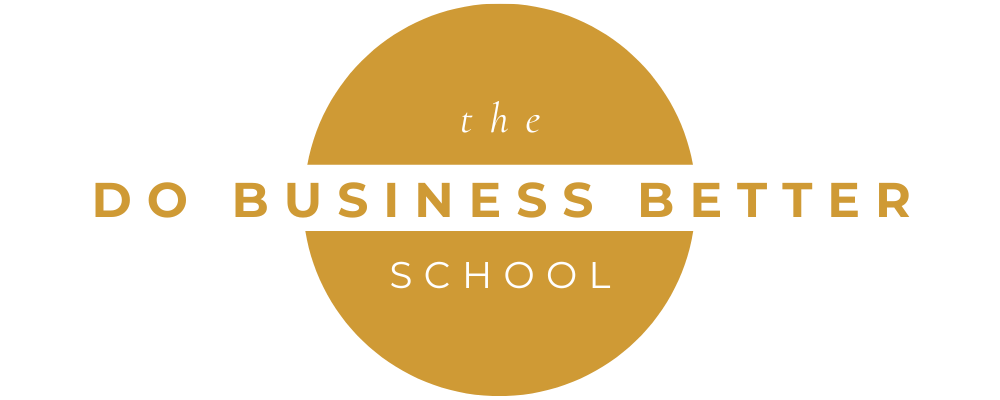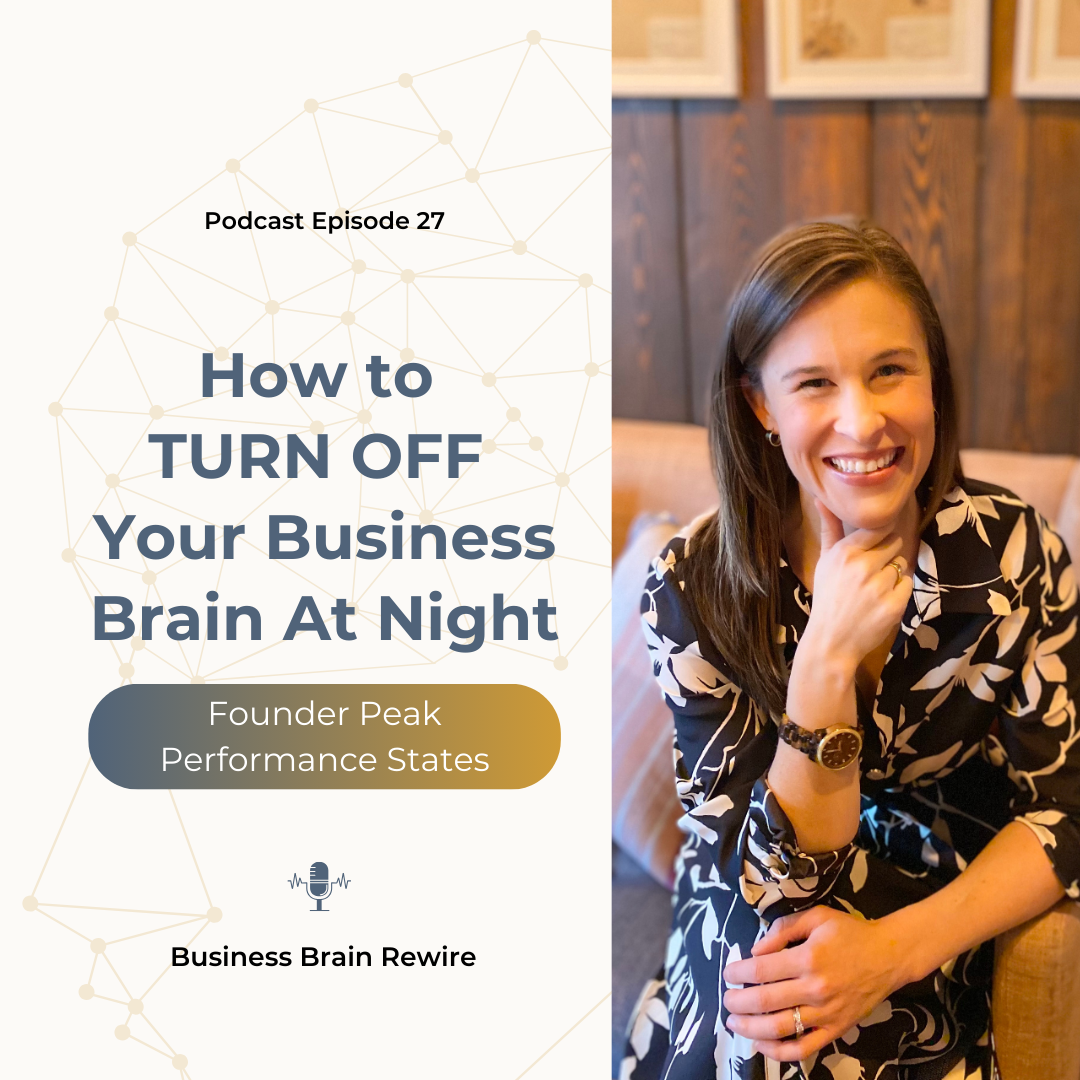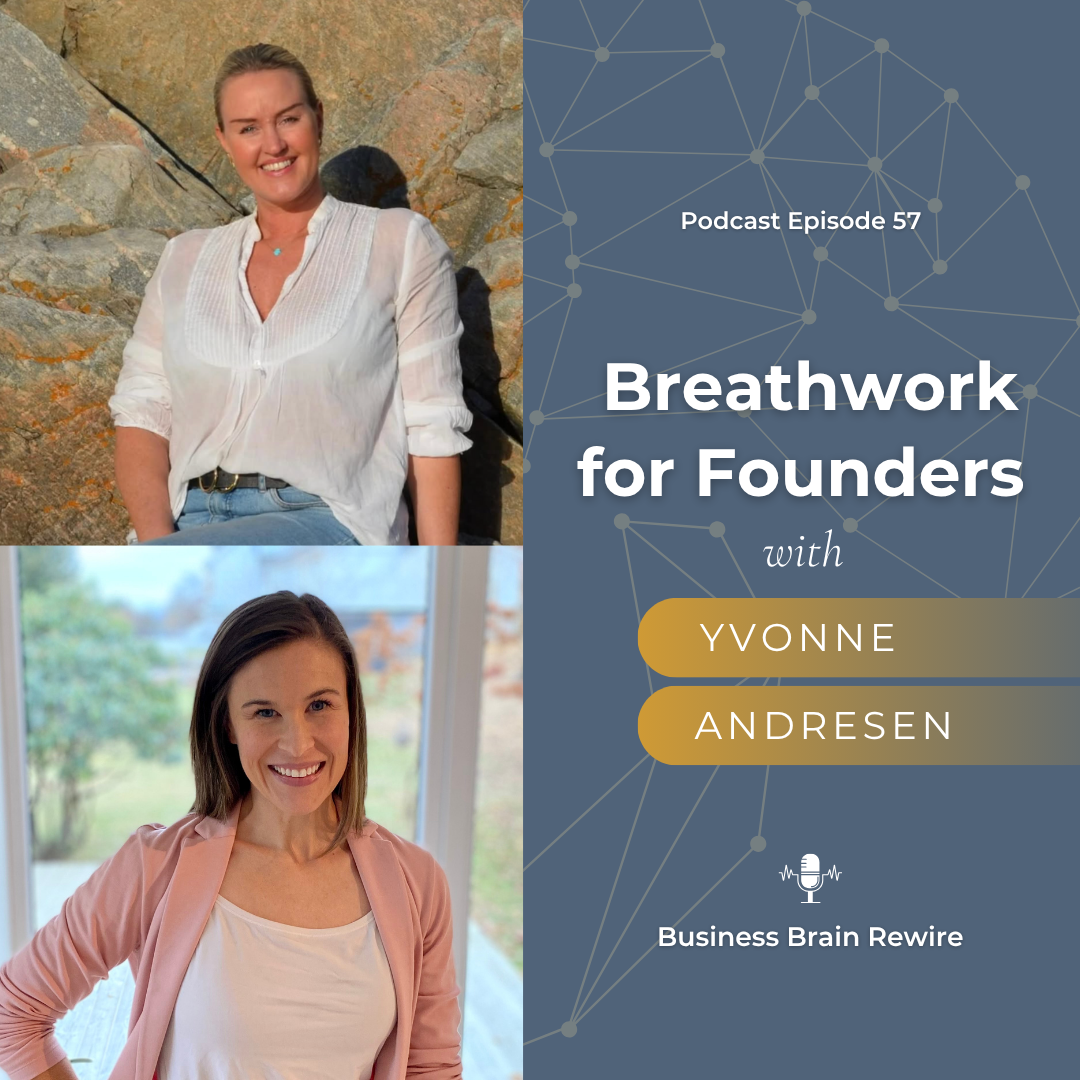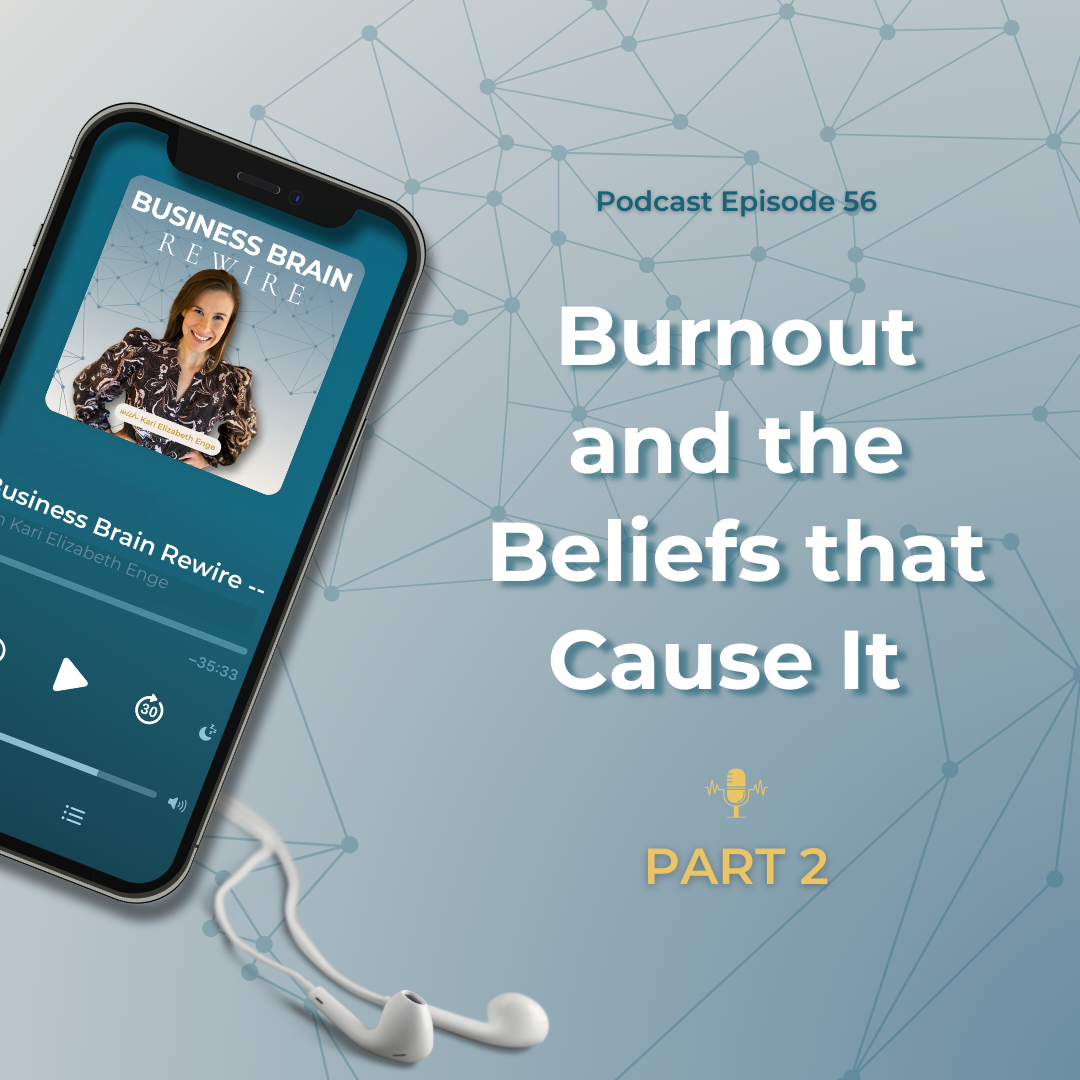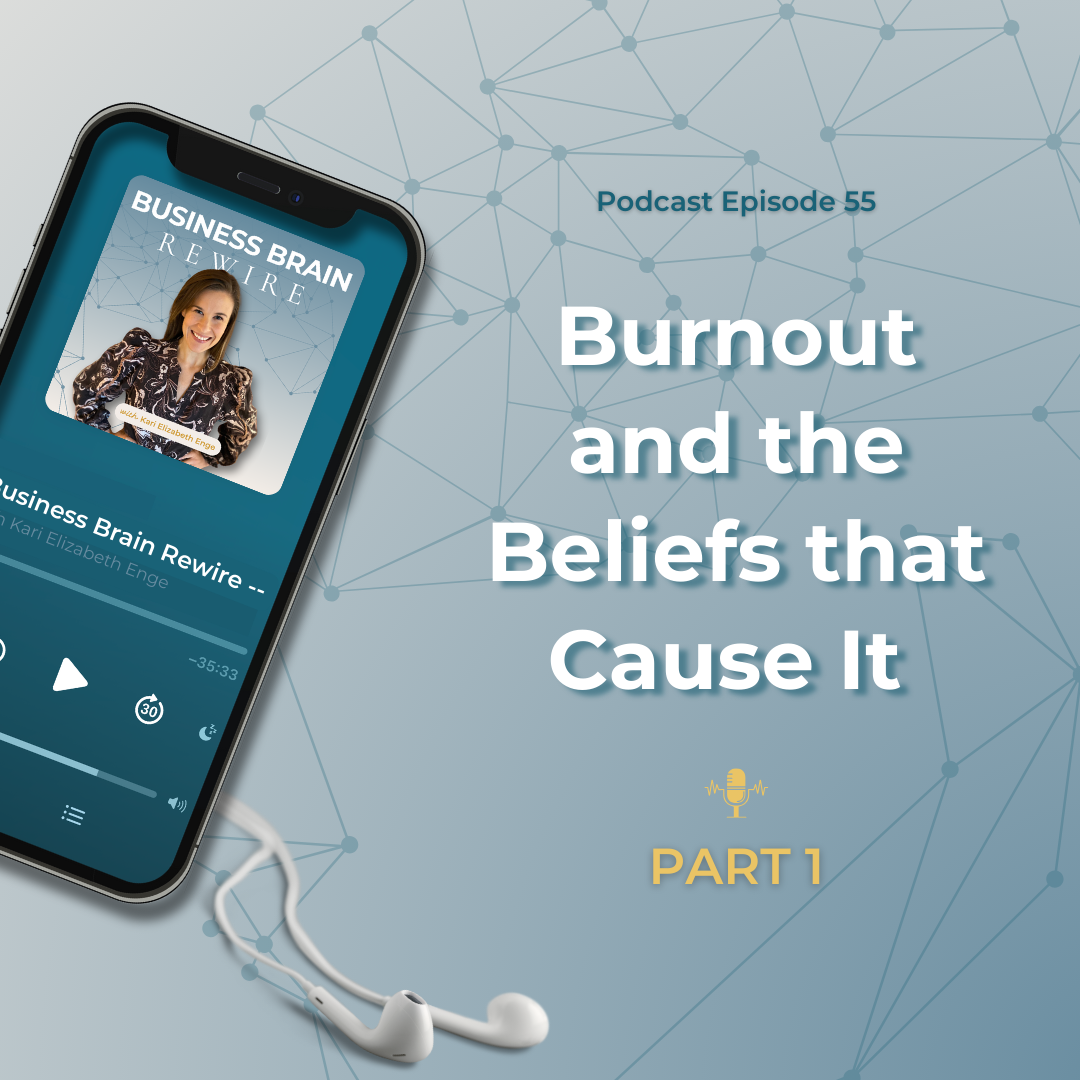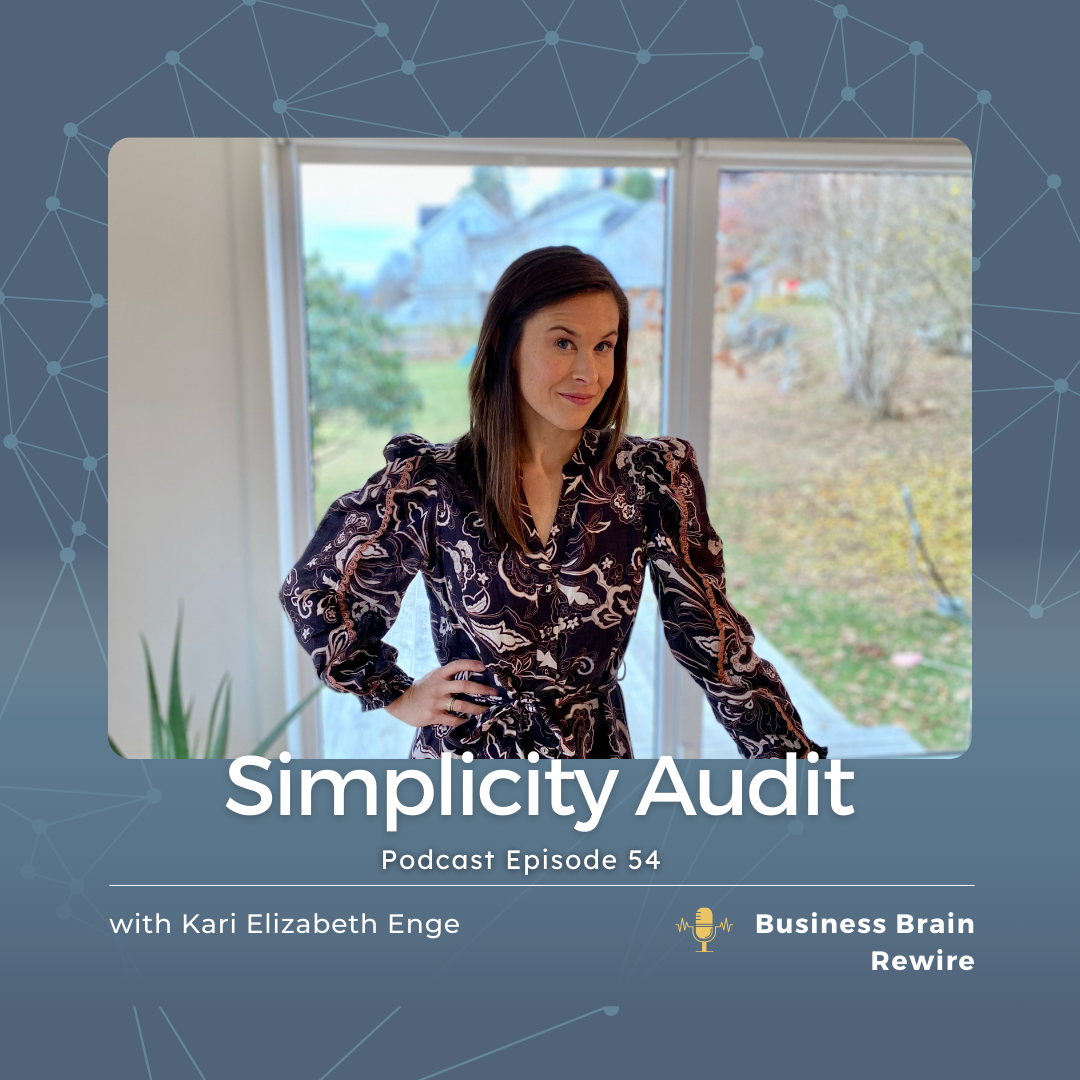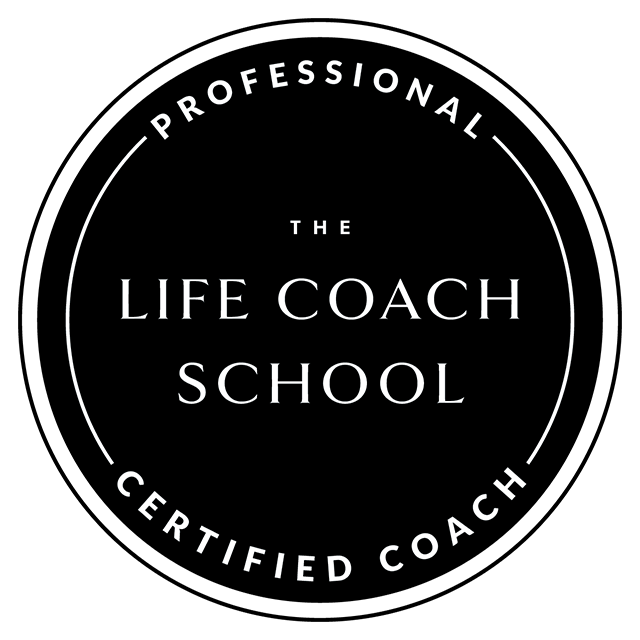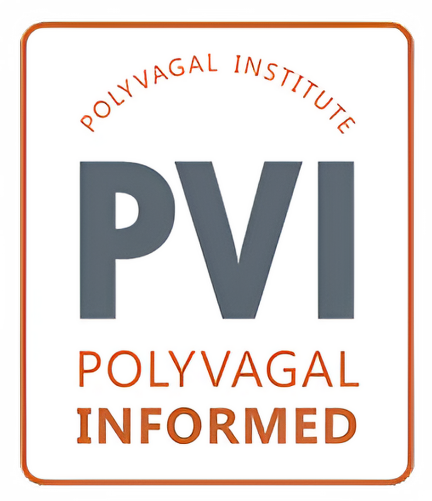On today’s podcast episode, I’m teaching you my Three-Step Process for how to turn off your business brain whenever you want to so that you can be present for rest, relaxation, and loved ones.
At the end of the day when you are at home trying to relax, notice how busy your brain is and how present you are in the room.
If you feel like there is an urgent problem to solve, limited options, a threat of any kind, confusion, complexity, or not enough time… This is a sign that your nervous system is dysregulated.
When your nervous system is regulated you will feel grounded, calm, curious, open, and spacious when problem-solving. You might have fun exploring all the options, but you’ll be able to put it down to rest and relax each day.
Remember, the undertone of your thoughts tells the true story.
You might have heard of HRV, the vagus nerve, or other ‘hacks’ to optimize your performance. However, founder regulation requires more than watching a TikTok video about breathing techniques.
You can’t pick the right nervous system regulation tool unless you know which unique state of the nervous system you are in. And there are actually 9 unique states that relate to entrepreneurship.
Once you know your current state, you can shift to one of what I call the: Founder Peak Performance States:
This trifecta is powerful when you spend more time bouncing between these nervous system states. You’ll have higher quality ideas, simpler action plans, better marketing that lands, and more energy for your personal life and wellbeing at the end of the day.
The key though is getting a specific toolkit of resources to shift into the exact state that you want, when you want.
Tune in today to get access to these tools.
[00:00:00] Hello, and welcome to today’s show. I thought I would do something fun today because I recently had a client ask me, on a coaching call, how do I turn off my business brain? How do I transition from work to home and mom life or whatever I am doing? How can I do that more quickly and more effectively so I’m really present and I don’t find my brain jumping back into business stuff and I can just pay attention to who I want to and what I want to, and really rest and relax.
[00:01:23] I think this is such an amazing question and an important question. I wanted to break down my three-step process for this, which I’ve actually been using for several years. This process that I’m going to teach you today is really practical and it’s something that took about five years for me to learn, after experimenting with lots of different things.
[00:01:47] For those of you who don’t know me, I have been a mom for about five years, I have a five-year-old daughter and a almost three-year-old little boy. I have really had to learn this skillset after becoming a mom because I was an entrepreneur for several years, a decade before, I had my first child. That really shifted the way I interacted with my business. I think in a really healthy, helpful way. Because I had to bring in some boundaries that would help me to really create a full, more flourishing personal life and so maybe we’ll talk a little bit about the benefits of that for your brain here as well today.
[00:02:29] Long story short, I really had to think about, okay, how do I transition really quickly so that my business doesn’t interfere with my personal life. I use all my bandwidth for the personal stuff when I’m in that zone and when I’m in my business zone, I’m not getting distracted by thinking through all of my personal life stuff. That way my brain can just really focus really efficiently on what’s in front of me. I can tackle that and then I can move on to the next thing. Let’s dive in to my three-step process for how to turn off your business brain after work.
[00:03:07] / I’m going to jump in today into a three step process, but before I do that, I think it’s really helpful for you, whenever you’re trying to ship something as a founder or make some sort of behavior change that first and foremost, you check in with yourself for all of your reasons for wanting to make that change. Behavior change is really tough. Our brains are wired to do the same thing over and over again, following patterns that we’ve always done. Our brains really inform our future by looking at the past. Whenever you’re trying to shift a current way of being into a new way of being, there’s going to be resistance there. You really want to first check in with yourself and ask, what are my reasons for wanting to go on this personal growth journey and do I like my reasons? Not all reasons are created equal. I teach something to all of the founders that I help inside my simply sustainable program, this concept called soft versus sustainable motivations. I think I’ve actually recorded a podcast episode about that. So I will try to link it up in the show notes. But in essence, we want to make sure that your reasons for doing anything in your business, whether it’s sales and marketing, or literally just turning off your business brain at the end of the work day, you want to make sure that your reasons are grounded in sustainable motivations and not soft motivations.
[00:04:40] Soft stands for four letters. It’s an acronym. It stands for, should others fear them or they. Whenever you’re thinking about wanting to make a change or to decide on a strategy for your business, you never want to do it because you feel like you should do it. You never want to do it because another person is telling you to do it. You never want to do it out of fear that something bad will happen if you don’t do it. You never want to do something only for another person for them or they. Now of course it can be really motivating and really inspiring to serve other people.
[00:05:22] For example, I know that I’m really serving my kids well, when I’m present with them. However, in order to make the decision to go on this journey of trying to apply this skillset and change my behavior. I don’t motivate myself because of only what I’m doing for other people. I create a sustainable motivation for myself, which is about what I want and about my desires and my fulfillment, and that actually creates a very sustainable motivation for me that will help me weather the storm when I don’t get it correctly, or I’m having a hard time with it, or I fall off the bandwagon. It really helps me to check back in and motivate myself for the journey of behavior change. That’s the first thing that I think is important, is asking yourself, why do I want to turn off my business brain? After work, what are the benefits that I received that I really want to have?
[00:06:22] How about I just share a little bit about the benefits of turning off your business brain first, so you can really create your own rebuttal against yourself, right, when your brain’s like jumping to business and getting distracted when you really want to be focused on your personal life. So that you have like a rebuttal against your brain to say, look, I know that you want to think about business, but here’s all the benefits you also want to receive, when you pay attention to your personal life and when you actually just disconnect, to rest and relax.
[00:06:55] One of the biggest benefits of rest and recovery is how your entire body lease system shifts and optimizes during something we call the stillness state. The stillness state of your autonomic nervous system is when you go from the sympathetic nervous system where you were activated to the parasympathetic nervous system and in the stillness state, you can do something called rest and digest. This basically means that your entire physiology changes and actually heals itself. When your body is in this healing state, it keeps your cognitive function like a well oiled machine. It helps your prefrontal cortex to problem solve in a better, more high quality efficient way. The more you spend time in a state of regulation, whether that’s the stillness, state another state called a control vehicle, or the play blended state, when you stay in these regulated states, which we’ll talk about more here on the podcast in the coming weeks, you actually expand your capacity and your resilience.
[00:08:15] Which means that the more that you spent time resting, the more capacity you build. I know that sounds a little counterintuitive because the accelerator culture is telling you to follow this boom in Boston approach. We’re just like go hard. Take. Take action. Get out of your comfort zone and that’s the only way to succeed. But we know from science that’s actually incorrect. You are just like an athlete. Every human body is the same. So the most muscle mass that has built is not actually from just the workout itself. The muscle is actually rebuilt and strengthened during the recovery time after being in the gym.
[00:09:04] This is the same for you, of course, we need to take action. You need to get out of your comfort zone. You need to learn new skills, but you also need to have that recovery every single day, so that the capacity increases and your resilience strengthens and not the opposite. When you don’t come back into that rest and digest state every day and into that recovery zone every day, you decrease your capacity, you decrease your resilience and you can actually shift your entire biology to have an entirely new baseline, which rewires your system toward, fighting off threats instead of thriving, which is not what you want in entrepreneurship, because if your entire physiology is paying attention to the threat, then you are more likely to interpret everything as a threat. Therefore you’re going to be strategizing and problem solving in a low quality way because you’re filtering everything through these glasses that are looking for threats and not looking for opportunities.
[00:10:19] Your rest and recovery from a neuroscience perspective is extremely important. One of the most amazing things that I think we can also tap into when we are in this state of relaxation is something called our reticular activating system or our R A S, which we’ve talked a lot about on the podcast so far. Just to remind you, your reticular activating system is this bundle of nerves that sits at your brainstem and it kind of filters and controls what incoming information you’re aware of and it helps you to see what’s important. It omits what’s quote unquote, not important. It helps you to see things and notice things that help connect the dots for you so it can help you solve your particular, goals.
[00:11:05] Now the RAs is not working that well when you’re not regulated when you’re in that sympathetic activated fight or flight stress response, it’s not working well, or at least not optimally to help you reach goals, because it reorientate itself to focus on threat instead of that growth goal that you have. Meaning that it will omit all of the incoming stimuli related to you thriving, instead make you focused on only threat, which is not what you want.
[00:11:40] The other really interesting part of your brain that we haven’t talked about on the podcast before, is called your default mode network. This is the part of your brain that when scientists study the brain in neuroscience do scans of the brain. There is a lot of activity in this default mode network, when a person is in a relaxed state. They see the brain firing in a unique way when someone is daydreaming, when someone is just letting their mind wander when they’re meditating. This becomes really active in in these stillness states and the D M N, or the default mode network, it’s associated with creative thinking imagination and self-reflective thought, and when this activates is actually easy for new ideas and insights to emerge. This is why when you’re on vacation or you’re in the shower or you’re walking in nature, you get that like, ah, I got it. Oh, my gosh. That’s such a good idea. That is because your default mode network is activating and working on your behalf.
[00:12:50] I love this quote by Adam Grant, which says: to truly innovate, we need to take breaks. The best ideas come when you’re not forcing them. Oftentimes we can’t solve the problem at the level of the problem we need to actually just let our brain do what it’s so beautifully made to do, which is to solve problems when we give it the space that it needs for our system to naturally come into this place of homeostasis and rest, it will actually drive us toward our goals.
[00:13:23] I also love this other quote by Dan Miller that says: you can be smart and busy, but you can’t be wise and busy. The more we slow down and the more we stop pushing and pushing the gas, all the time, the more effective we can actually be as founders.
[00:13:41] The other important part about this is sleep. We will probably have some amazing guests on soon to talk about sleep. I’m talking to a couple of neuroscientists right now are you going to maybe come on and share their perspective on founder’s sleep with you.
[00:13:57] Sleep is not just a good idea. I know that you have heard, sleep is good, sleep is healthy, you need more sleep. We all know we need more sleep. Me as a mother, I understand the dilemma of not getting enough sleep and actually the difficulty in solving that problem. Right? When you have babies and toddlers, it’s a real thing.
[00:14:17] One of the things to keep in mind is that the primary way the human body metabolizes cortisol, which is a stress hormone that comes from fight and flight stress responses, that is the way we actually metabolize that and dissolve it in our body. We really need to protect sleep, not because it, it makes you not foggy and tired in the morning, but because it actually counteracts any stress that we might have experience throughout the day and we can’t let that pile up, we have to metabolize that on a daily basis.
[00:14:54] If we don’t, it is going to reorient us to that threat zone and the entire physiology changes in our brain actually becomes more quote, unquote dumb over time when we’re not taking care of our body. I hope that this just shares a few benefits of why you would want to turn off your business brain after work, create more strict boundaries around your working hours and then really work to prioritize the skillset of learning how to leave work in your brain and reorient your attention toward your kids, toward your spouse, toward play, relaxation and rest.
[00:15:36] There are many other benefits, but that just gives you a little, a little, teaser of why you might want to think about some sustainable motivations to apply these three steps that I’m going to share with you now.
[00:15:50] / Step one to turning off your business brain at the end of the day is what I like to call doing an attention audit. When you are sitting at home, maybe with your kids or with a partner, or maybe just talking on the phone with a friend, I want you to notice where your attention is.
[00:16:32] A really helpful way to do this is to use a scale of one to 10 to rate your brain and to rate what’s going on in with your thoughts. Number one on this scale would be very foggy where your thoughts are very slow and tired, and maybe you are even checked out. Number five on this scale is the optimal state where you feel really grounded and you have energy that you can use on your personal life and you can remain present with whatever you want to do in the moment. Your brain is not getting distracted and going back to business. You’re able to listen to other people without fidgeting, you’re able to not change the subject. You have the ability to curl up on the couch and relax if you want to. Number 10 on this scale is where you’re distracted, you’re spinning in your head about business. You feel fidgety or even hyperactive. You want to really do an audit of how busy is my brain right now and is it on the foggy slow end or the hyper active fidgety distracted, spinning in my head end? Or am I somewhere on this scale in the middle?
[00:17:51] This will help you to realize how often you are distracted and how often your attention is not on the present moment with your personal life and how often your brain goes to business. It’s also going to give you a really good sense of your energy levels so that you can understand and get a baseline for where you’re at, so that we can either bring more energy into your personal life, if you feel drained at the end of the day. Or we can down regulate you so you’re able to relax if relaxation and slowing down feels hard for you, because it just feels like you’re really active and just sitting still is something that doesn’t feel fun or comfortable for you.
[00:18:34] So that’s step one. Once you really have a lay of the land and have this awareness, we wanted take that a step further, which is to understand the undertone of your thoughts. Here is a powerhouse question for you that I like to ask often: do your thoughts have a threat of flavor to them or a thrive flavor to them? What do I mean by this?
[00:19:01] Not all thoughts are created equal. When you are distracted and thinking about business. Those can have a threat flavor to them or a thrive flavor. I’ll just give you an example. If you are distracted and you’re your brain just keeps taking you back to a conflict that you’re having with someone maybe in your business, or even just, someone in your personal life. It feels like that’s a problem that you really need to work through right now that is going to be threat thinking, right?
[00:19:35] The brain is signaling that there is a threat there of conflict, that’s going to reorient your entire physiology in that moment to being in that fight flight freeze fund stress response, because there is a threat to fight off. The other end of the spectrum, another example would be, where you’re really excited about something in your business and you’re having a lot of fun and you’re in that flowing place state, and your brain goes to a creative idea and it’s distracted, but it’s distracted in this really, fun, exploratory, curious, innovative, passionate way, and oftentimes, you are prompted to tell a loved one about it, but the flavor of it’s very different.
[00:20:24] This is really important for you to check in on because not all thoughts are created equal. Even though you may not want to be distracted with your business and you want to be present with your kids. We want to make sure that when we’re solving for that distraction, we know if those thoughts are coming from the fight flight stress response, that threat, or if they’re coming from the place state where you’re just really excited about what’s going on in your business world.
[00:20:53] If you feel like there’s an urgent problem to solve where there’s limited options, there’s pressure. There’s not enough time or there’s a time crunch to figure it out. It doesn’t feel very specious and full of possibility to solve that problem, that is a sign that your nervous system is dysregulated. It’s very hard to be present in the moment and enter into the play state with maybe your kids when you are literally fighting an urgent problem with the time crunch in your business. That’s just common sense, right? The brain will bring you back to the problem.
[00:21:31] The goal is to regulate your nervous system, so that play and that calm grounded-ness that ability to just be present becomes available. The undertone of your thoughts, they tell the true story of what’s going on. This is a second part of the awareness process where you first get a lay of the land of like where your energy level is at and how busy your mind is. Then we want to look at, okay, what is the undertone of, what is the story here?
[00:22:04] I think this is a hard thing to differentiate in the beginning because when you are activated all the time or a large majority of the time, you are used to thinking with those threat glasses on, instead of those thrive glasses on you. Often times don’t even know the difference because it’s just the natural orientation that you have and everything is filtering through it. It’s like the water you swim in, like, if you’re a fish, the fish doesn’t know that it’s swimming in water, right, until you take it out of the water.
[00:22:42] So oftentimes, entrepreneurs especially, can think that, you know, I’m just problem solving my brain just likes to see the flaws and see how things could work better and how to optimize and how to exploit resources to make something better. Yes, this is part of the genius and the impact that founders have in the world. We do think outside of the box, we do ask questions. We do point out flaws so that we can create innovative solutions, but the key here is that when you’re doing it, it needs to be from the place state from this flow state. That means that when your brain is thinking about these things, it should feel more specious and it should feel creative and it should feel like you’ve caught plenty of time. It should also feel like you have a lot of agency and control. It shouldn’t feel like your freedom or your control is being taken away from you.
[00:23:52] This has actually recently happened to me. That’s one of the reasons why I’m sharing this particular step in this way with you today, because I think it’s just so easy to accidentally fall from thrive thinking, from that innovative problem solving, think outside of the box thinking, that an entrepreneur naturally has, into threat thinking and shift yourself from the place state into fight or flight without you even knowing. That’s why this question does this thought have a threat or thrive flavor to it. That’s why that is such a powerful question.
[00:24:30] Just to give you an example of what happened in my life recently. As you know, I live in Norway and I am an American and the tax situation is, you know, really interesting. I’m sure a lot of immigrants can relate to me. As an American, I pay taxes on my worldwide income, regardless of whether or not I live in the United States or not. So that can mean that I have, in some ways, double taxation at a certain point. There’s also been a recent new tax introduced in Norway called the exit tax, which was primarily introduced to tax the ultra wealthy when they try to leave Norway so that they can’t just run away and find a better country to live in.
[00:25:15] But as you know, Norway is a pretty high tax country, probably one of the most highly taxed countries in the world. The threshold on this tax is quite small and so that has some implications for an immigrant living in Norway like me, because I own a corporation in the United States. Norway would tax me on the value of that or that organization and the states when I tried to move back to the United States. They would tax me a very high, in my opinion, rate on the value of my company even if I didn’t sell it. They would tax the capital gains tax with like 37%.
[00:25:53] While this podcast is not meant to offer my political viewpoints and beliefs, what I want to, share with you today is how it’s just so easy to fall into that thread thinking. You know, I was doing the math on a hypothetical situation of wanting to go back home and live with family and get to warmer weather. What that tax bill might be for me when I leave and what the implications of that would be?
[00:26:22] Me and my husband were talking about, okay, do I shut down the American corporation all together? What’s the best way of navigating this burden? While it can feel almost fun and adrenaline producing to work through this problem because of how I’m wired as like an entrepreneurial person. It was easy for me to fall into this place where I did feel like a victim. I felt kind of trapped and controlled like, oh my gosh, we’ve got to get out of here. I’m gonna have to solve this and my brain kept taking me like in a hypervigilant way back to solving this problem, even though it’s not actually urgent.
[00:27:01] It’s really easy to fall into this, oh my gosh, we have a problem here. There’s a fire to put out kind of zone. That’s not where you want to be problem solving from. You, of course, want to be using your founder brain and all of the unique ways that it operates, that might be different from an employee mindset who’s like, wow, who cares? We’ll worry about that later.
[00:27:25] You also want to remember that you always have time, options and empowerment to work through problems and it is actually never urgent. You always have time and that will really down-regulate the nervous system, so that more ideas and better ideas will actually flow to your brain when you problem solve it.
[00:27:46] That was just a little tangent for you, but I hope that it can help you to really check in with your thoughts and ask yourself this really great question am I coming at this from a threat or thrive way of thinking.
[00:28:00] That’s really important for this conversation related to just turning off your business brain at night, because if you are threat thinking or you are problem solving in an urgent way when you are trying to relax, it’s going to virtually be impossible without a toolkit.
[00:28:15] So that brings us to the final step of this process, which is to gain tools and use those tools to shift. Now, if you’ve been following my work for any period of time, that it is important to shift the state of your nervous system, using body up approaches, meaning that we show the body that we’re safe. We don’t always just try to have an intellectual conversation with our brain to calm ourselves down. It doesn’t work that well because of how our bodies are wired for survival and safety, it’s way more helpful and way faster to use body movement and different techniques of the body to tell the brain that it’s safe.
[00:29:00] This is because 80% of the Vegas nerves fibers are a Ferrant meaning 80% of them are responsible for sending messages from the body to the brain in order to register our safety or not. You have to show the vagus nerve that you’re safe using the body and not necessarily using the brain all the time. Although you can use the brain as well. You always want to start with the body and when you are using body approaches you want to make sure that you understand what state of the nervous system that you’re in order to shift. I think this is where a lot of people get stuck because maybe they’ve seen a Tik Tok video about how to hack the vagus nerve or they’ve seen some breathing technique or they’ve seen something out there.
[00:29:54] There’s a lot of hype around HRV and the Vegas. So most likely, unless you’re living in a silo, you’ve heard these terms, but you don’t actually understand the whole picture and you don’t have a well-rounded education around how this all works.
[00:30:13] There are actually nine unique states of the nervous system that very much relate to you as an entrepreneur. It depends what state you’re in, in order for you to pick the right tool in order for you to shift out of that slow sluggish, disconnected, drained state or to shift out of that spinning thoughts, hyperactive distracted, urgent busy zone that we talked about in the beginning on that scale of one to 10. It depends on what end of the spectrum you’re on, which tool you will use to come back into the balanced center.
[00:30:52] The balance center, that optimal state, that number five that I talked about at the beginning is what I call the founder peak performance zone. It’s made up of three nervous system states the place state, the ventral vagal state, and the stillness state. It depends on where you’re coming from, either one or 10 on the spectrum in order to move toward five. Then in order to create one of those unique states, whether that’s play ventral bagel or stillness, you need to use a particular type of toolkit. Obviously, getting into the still state is different than getting into the place state. So it really depends on what activity you’re doing to get into that optimal zone.
[00:31:35] This peak performance zone, it’s like the trifecta, for business owners, when you bounce between these sub states of play ventral vehicle and stillness, your physiology really does reorient toward that thrive zone. All of your brain activity becomes higher quality, right? Because of what we talked about in the beginning.
[00:31:58] Strategizing becomes better, action plans become tighter and cleaner and more powerful. Implementation is better. Your marketing and your sales lands. You don’t burn out. You can become objective and creative when you’re problem solving. Your brain can really perform at an optimal level.
[00:32:19] The other wonderful thing about this is that the more you spend time in these states during work, the easier it is to bring them into your personal life. The more you practice them at your purse in your personal life, the more they help your business. They ping pong back and forth off of each other and they play off of each other. As you spend more time in this optimal zone, your capacity expands, your resilience expands. You really do expand that window of tolerance, so that less stresses you out.
[00:32:52] So, this is just like a win-win win as you get into this thrive loop rather than the threat stress loop of your physiology. Now these three steps are not always easy. Just like any behavioral change, whether you want to build muscle at the gym or you want to change your diet, or you want to get more sleep. You know, from firsthand experience how challenging it can be to shift your way of being from one way to another. So this three-step process is straightforward. It’s not easy, right?
[00:33:30] The brain does want to take you back to that threat thought often, and it will use the pattern of thinking that you’ve always done in order to do so. So you really do need to learn the exact toolkit for actually how to shift.
[00:33:47] That’s something that we do in simply sustainable every single day, if you’d like a specific set of tools in order to shift into that play stillness, ventral vagal state.
[00:33:59] If you want to learn how to strategize and problem solve and market and sound evaluate more effectively, that’s all what we do inside simply sustainable every single day.
[00:34:08] We have a very extensive library of neuro-plasticity resources and tools, meaning that they help to reorient your whole brain and body and they only take three minutes.
[00:34:21] This library is not something that’s like super complex. It’s literally just body movements and breathing exercises and different op guided audio exercises. They take three minutes and you just do them often.
[00:34:34] Over time, you’ll see that your brain will shift from threat to thrive. You’ll be able to transition from business and personal more easily. You’ll feel more fulfillment in your personal life and your business will grow. It can actually be as simple as that, but of course, you’ll have to take the steps to do the work and actually open up your computer and follow the prompts.
[00:34:58] All right. I hope that this episode has been eyeopening for you thought provoking for you, and that you’re starting to think through what your sustainable motivations might be for wanting to learn the skillset of being able to turn off your business brain whenever you want it.
[00:35:18] I hope that you start to do an audit of where your attention is, to pay attention to the undertone of your thinking, also start to think about arming yourself with that tool kit of resources, to be able to shift states.
[00:35:34] Remember you really do have the ability and the resources inside of you. Your brain is wired in such an amazing way. You really do have the resources to grow your business in a balanced and effective way. All you have to do is to tap into that resource.
[00:35:54] I hope you have a beautiful rest of your work week and a wonderful weekend unplugging. Keep serving the world. Keep making sales. Keep making time for self care and I’ll see you back here next week.
